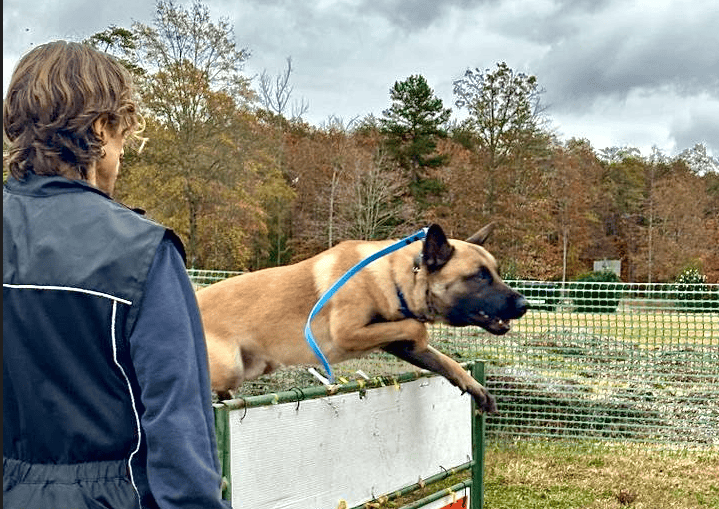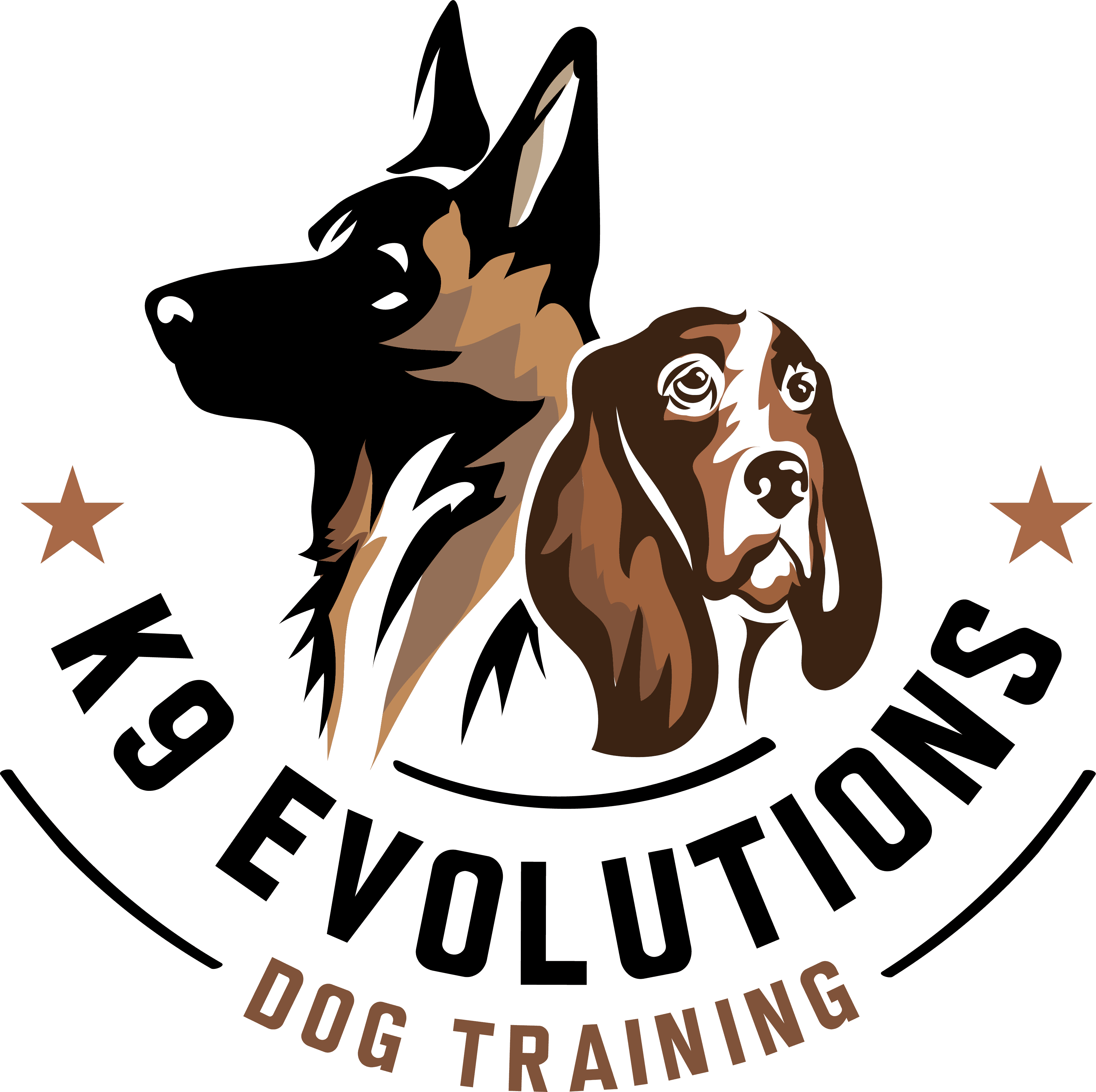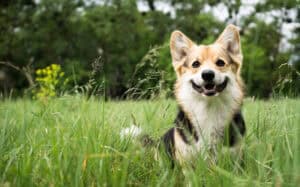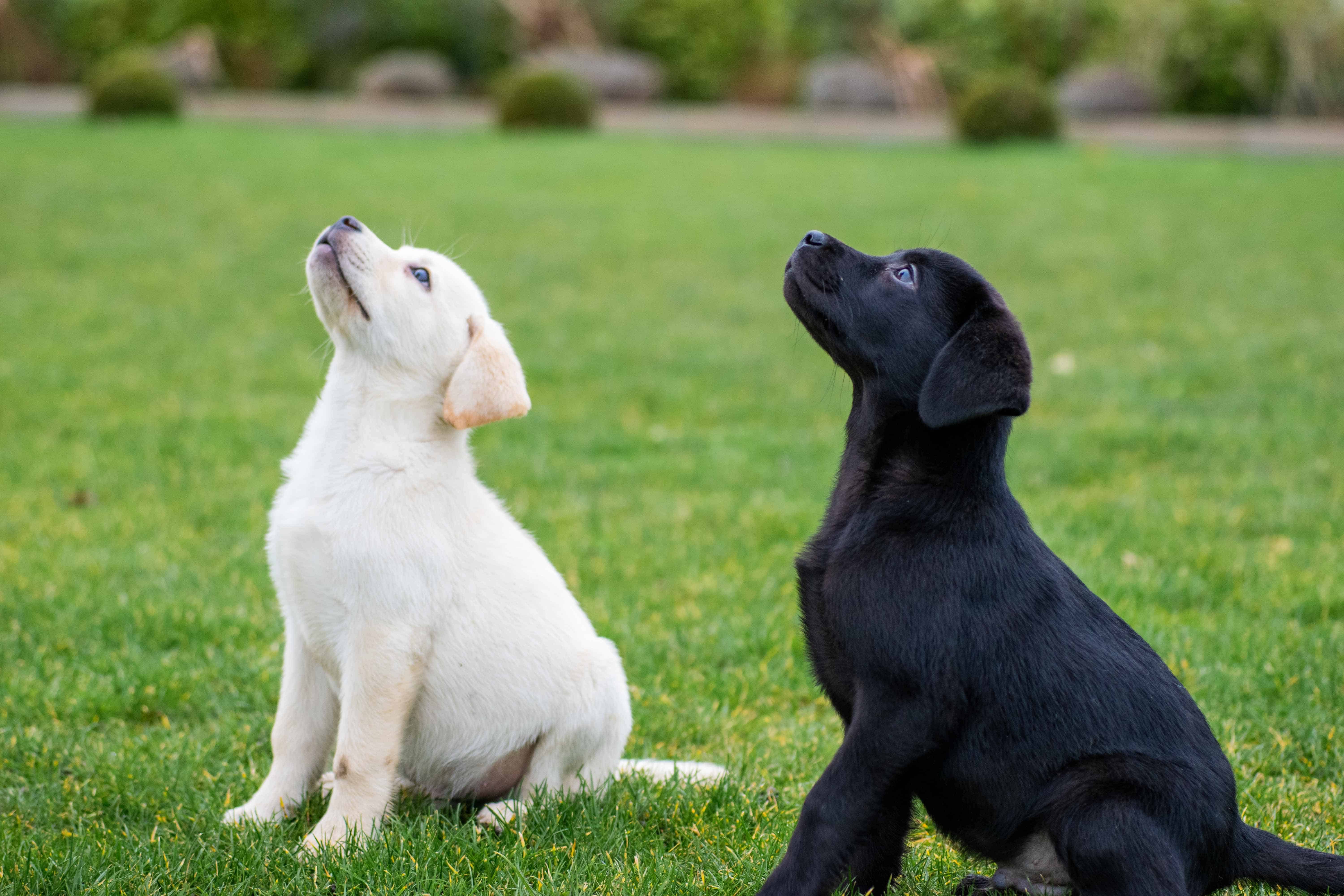Welcome to the K9 Evolutions Dog Training blog! We are delighted to have you here. In the months and years to come, we will be sharing a wide variety of valuable dog training tips to help you extract the most from your relationship with your dog. Our guidance is provided from the accumulated knowledge of best-in-class dog education, combined with real-world experience of working with a variety of dogs over the course of several years.
In this introductory blog article, our founding head trainer, Jesse Gervich, outlines his lived experiences with man’s best friend. He also explains what has shaped his dog training philosophy, and the importance of education to equip him to resolve even the most complex canine behavioral issues.
—
Growing up with dogs
My earliest memories with dogs go back to when I was a toddler spending countless hours with the family dogs – even going so far as to take my toys out into the doghouse my Dad had built in the garage, and just hanging out with my dogs while they watched me play with toys for hours. From the moment I could walk, I’ve just always gravitated towards dogs.
Around the age of five or six years old, my interest in dog training was sparked by watching my Dad work on basic obedience in our backyard with our Bloodhound, Chewbacca. Chewbacca weighed 150 lbs and had behavioral issues. I watched my Dad work on all basic commands by working the leash, and that was my introduction to dog training through observing communication to the dog using leash pressure.
My Dad saw that I was interested, and immediately let me get involved. He even handed me the leash. It was probably unbeknownst to my Dad, but in those days, he was using forms of “oppositional reflex” with leash pressure, an approach that is more commonly referenced in modern-day dog training than it was back then.
I have very fond memories of when my Mom and Dad would take the whole family to a deep woods park on the weekends to allow Chewbacca to get exercise and utilize his greatest asset – his nose. My Dad would have all of us take a slice of American cheese and run off and hide in the woods, in what was a game of hide and seek for Chewbacca. Knowing what I know now about the process of training trailing dogs (dogs that are trained to find people lost or missing in the woods, or police K9s trained to find escapees), what we were actually doing is what is referred to as ‘hot trails’. This is essentially the introductory step in teaching a dog or puppy to find people once they are out of sight by using their nose.
Favorite breeds
I would say that my favorite breed is the Belgian Malinois, and the reason for this is they are – in my opinion – the most versatile dog on the planet. You would be hard pressed to find another breed that can do all the things a Belgian Malinois can do. Another reason is that they are extremely intelligent with very high drive – so much so that you have to know what you are doing to channel that drive so the dog can learn. I like that it is a challenge to own a Belgian Malinois, and it takes a special kind of person to be able to have and handle these dogs. It is not a breed everyone could or should have. I have a male & female Malinois named Zappa & Capé, and while it’s a rugged lifestyle, I wouldn’t have it any other way. I love it.
Second to that would be Hounds. I love scent work and the amazing olfactory abilities these dogs have. They are also a challenge to work with, because they are so engaged in what they are processing with their nose that they can be stubborn to train. When I trained Police K9s, I found that Bloodhounds were the best trailing dogs when it came to ‘cold trails’ that are both long in distance and have been aged for several hours.

My dog training philosophy - and the benefits for the human-canine relationship
My dog training philosophy is a balanced approach using all four quadrants of operant conditioning. Within that realm, I choose from a wide spectrum of nuanced approaches that depend on the dog. I don’t believe in a “one size fits all,” approach. Not only is every breed different, but even within each breed, every dog is different. A lot of what I do is positive reinforcement, but I also don’t shy away from using leash pressure to communicate to the dog what I want them to do. If I am only using positive reinforcement, I am only giving the dog half the picture – whereas with a balanced approach, it is more intuitive to the dog.
What has shaped this approach is years of experience with all kinds of different dogs and breeds. During every single training session with a dog, I ask myself: “Does the dog understand, and am I being fair to the dog in what they do understand?”
Dog training is something that every dog owner should invest in. Getting a dog is only half of it – I don’t care if it’s a family dog that’s going to be a couch potato, or a very active dog. By taking on a dog, I think it’s paramount to be able to communicate with them. I heard a comedian once say, “My dog understands at least 20 different words from my vocabulary and I understand zero barks; so you tell me, who’s smarter?” It’s funny, but the truth is because we are different species, dogs are already adept at reading our body language and nuanced vocabulary as it stems from evolution. It is even more important, and we owe it to our dogs, to develop clear communication that is concise and consistent for a harmonious relationship. Humans and dogs have had a symbiotic relationship for over 30,000 years. The art of communication with canines lies in dog training. Coupled with that is a sense of purpose. Dogs – just like humans – gravitate towards a sense of purpose. Dogs want to work and they want to learn. It is my philosophy that it’s not just about having a family relationship with your dog, but a working/family relationship, which is what the dog truly desires.
A dog is not happy just being a bored observer watching the world go by. They want to be engaged. I’ll go further in saying that it’s not enough to just give your dog exercise. You must work the dog’s mind as much or more than the body. Their cognitive health is just as important as physical health. With all of the dogs I’ve trained (including the ones who are ambivalent about starting training), once they start learning something new and the momentum builds, something inside them lights up. You can see their confidence build, and before we are a quarter through the training program, they are jumping at the chance to get out on their rotation to get worked and perform. It’s a beautiful thing to see.

Why education matters
In addition to my ongoing hands-on education – every day is a school day when you’re working with dogs – I also attend seminars and keep myself up to date with what’s going on in the industry. I inhale the latest literature and I belong to a Mondioring Ring Sport Club. I have also been inspired in my journey by Michael Ellis, who is a renowned trainer based in California.
I am a graduate of the Master Dog Trainer program at the School for Dog Trainers; which covered all aspects of dog training, including pet dogs, service dogs and working dogs.
Spending time at the School for Dog Trainers was a great experience with great memories. It exposed me to so many facets of dog training – for example, before I attended, I knew very little about service dog training. We studied working dogs, pet dogs and behavioral modification in a lot of depth.
The School takes a very science-based approach in the study of Classical Conditioning and Operant Conditioning. I don’t know of many schools where you’ll have the opportunity to get your hands on such a high volume of different dogs and different breeds, or even dogs with behavioral problems that are all over the spectrum in need of help. I received an award for Student Excellence, and during that program we even had to train non-canids – whether it was a cat, a goat or a donkey. In that experience, it became abundantly clear the congruent science of classical and operant conditioning and the commonalities in how it works in cognitive learning for all sentient animals, not just dogs.
When I came out the other side of graduation, I felt equipped to accurately diagnose and handle even the most severe and dangerous dogs for behavioral modification – including those that a lot of other trainers would be out of their depth to handle.
My ambition for K9 Evolutions Dog Training
What separates me from my competitors is that I don’t take a factory stamped, one-size-fits-all approach. I am not pursuing this career to churn out dogs in high numbers in the shortest amount of time possible to make a profit. I actually wake up out of bed excited every day about dog training. I actually enjoy it when things don’t go according to plan and a problem arises that I have to work through; when I end up with a dog doing something peculiar and causing an obstacle, it fascinates me.
I have high standards. When a dog has gone through my program, I have to see those standards hit for me to stand behind that dog and say they were trained under me. It hasn’t happened yet, but if a dog is having learning difficulties or if the dog is not where I want them to be in terms of benchmarks by week three, I have no problem eating the cost, taking up kennel space and holding on to that dog longer. I would reach out to the client asking to keep the dog for an extra week. For me, it’s not about if the dog went through the three week program; it’s about ‘is the dog a finished dog?’. I stand behind each dog I’ve trained. When they’ve been through my program, if the dog needs a tuneup or if a behavioral problem crops up that my client needs help with, I am there to help for the life of the dog.
My long-term ambition for this business is to grow, but only in such a way where I can keep the high standards of quality and attention to detail, and continue to help more and more dogs.
For my clients, I would like them ideally to keep going for more in continuing their dogs’ education. Even if they have completed the full obedience package, I’d like them to keep going. Maybe that’s getting their dog the CGC title, or perhaps training their dog in SAR & Trailing or getting their dog into a dog sport. Dog training can be a lifelong pursuit – not just a one and done thing.



